Trees Birds Mammals Fish Amphibians Reptiles
Wild Algarve
Bookshop
Adonis Blue Butterfly - Polyommatus bellargus
Phylum: Arthropoda - Class: Insecta - Order: Lepidoptera - Family: Lycaenidae
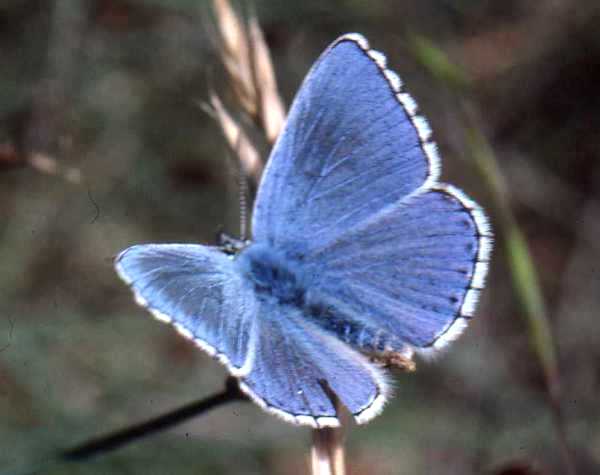
Above: a male Adonis Blue
The Adonis Blue is rather less common in Britain than it used to be, and it is certainly one of the less widespread of the 'blues'. You can expect to see these pretty little insects on sheltered areas of chalk downland and dry scrubby wasteland in calcareous areas. The Adonis Blue can be seen in flight from mid May to the end of June and again from late July to mid September.
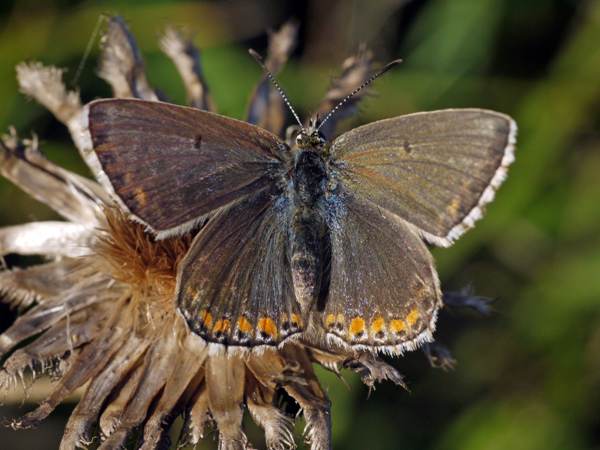
Above: a female Adonis Blue
Description
The females hardly justify the name 'blue'; they have chocolate brown upper wings with a blue suffusion that rarely extends to the margins.
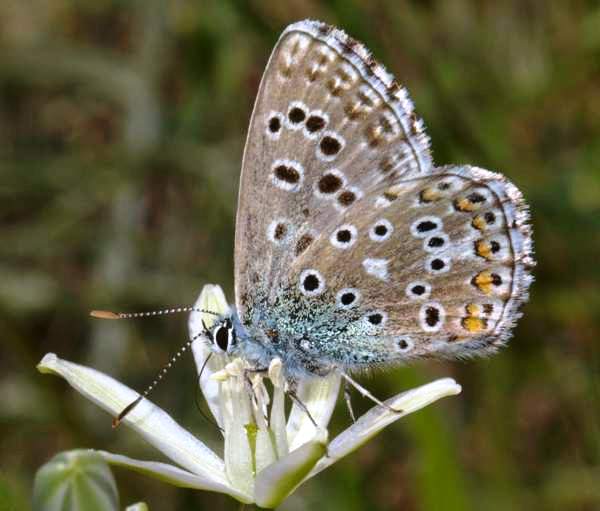
Males of the Adonis Blue are paler than females, but they vary considerably in the depth of the blue colouring on their upper wings.
Key identification features of the Adonis Blue are white outer edges of the wings that are crossed (checkered) by dark lines radiating to the edges; orange patches near the outer edges of the undersides of the hindwings.
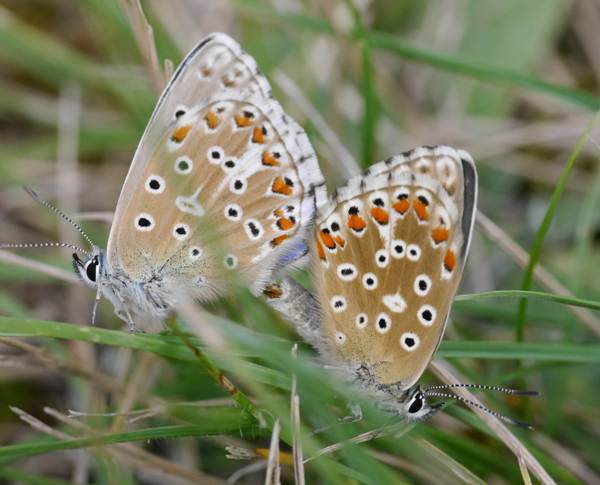
Underwing spotting is very variable, however, and many 'aberrations' have been described in the literature. (Several 'forms' were recognised in the past.) The challenge of identifying Adonis is made even more difficult by the promiscuous nature of these beautiful butterflies, which have been known to hybridise with other members of the Polyommatus genus.
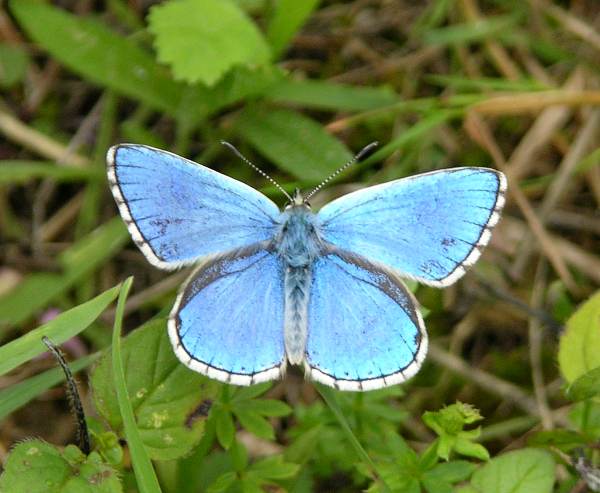
Distribution
In Britain the Adonis Blue occurs on chalk downland in southern England; it is not recorded in Ireland, Wales and Scotland. Elsewhere, this butterfly's range extends through central and southern Europe, and into parts of the Middle East.

The male Adonis Blue shown above was photographed in herb-rich short grassland near Monchique, in the Algarve region of Portugal.
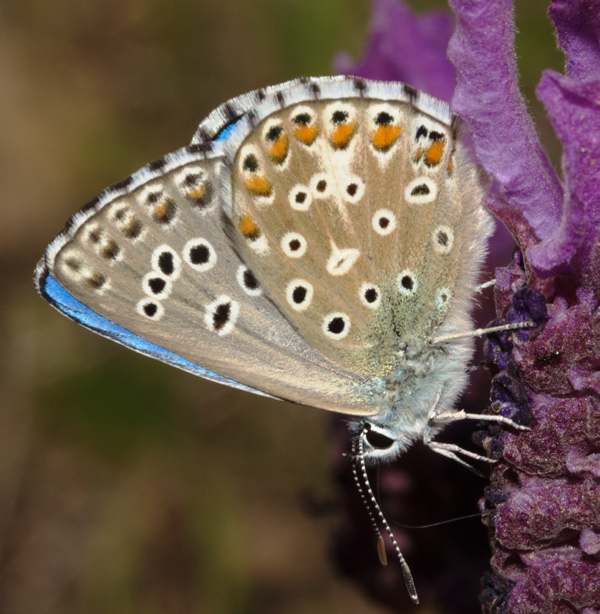
Lifecycle
The larval foodplant used by the Adonis Blue in Britain is Horseshoe Vetch Hippocrepis comosa.
In Britain the Adonis Blue overwinters in its half-grown larval state. The pale green caterpillar have yellow stripes running along the length of their bodies; they produce a honeydew-like liquid on which ants feed. To protect their food suppliers the ants in turn ward off predators that might otherwise eat the caterpillars or their pupae.
The chrysalis of the Adonis Blue Butterfly is olive green or olive brown. The larvae and pupae are attended by ants that sometimes bury the larvae in dry soil or drag the chrysalises into their anthills, from where the adult butterfly eventually emerges.
In southern Britain there are two broods, with the the first brood of Adonis Blue butterflies emerge in late May and early June and can be seen flying until late June. The second brood flies from early August until late September.
Acknowledgements
This page includes pictures kindly contributed by Anne Horsfall, Rob Petley-Jones, and Betty and Tony Rackham.
Studying butterflies and moths...
Excited by rivers and streams? So are we, and we're pretty sure you would find the Winding River Mystery trilogy of action-packed thrillers gripping reading too. Dead Drift, Dead Cert, and Dead End are Pat O'Reilly's latest river-based novels, and now they are available in ebook format. Full details on our website here...
Buy each volume in ebook format for only £2.47 on Amazon... Paperbacks also available on Amazon at £6.95 each. All proceeds go towards keeping the First Nature website online.
Please Help Us: If you have found this information interesting and useful, please consider helping to keep First Nature online by making a small donation towards the web hosting and internet costs.
Any donations over and above the essential running costs will help support the conservation work of Plantlife, the Rivers Trust and charitable botanic gardens - as do author royalties and publisher proceeds from books by Pat and Sue.